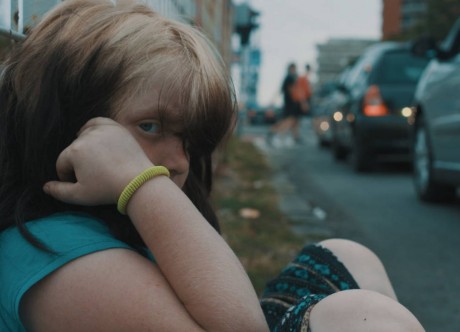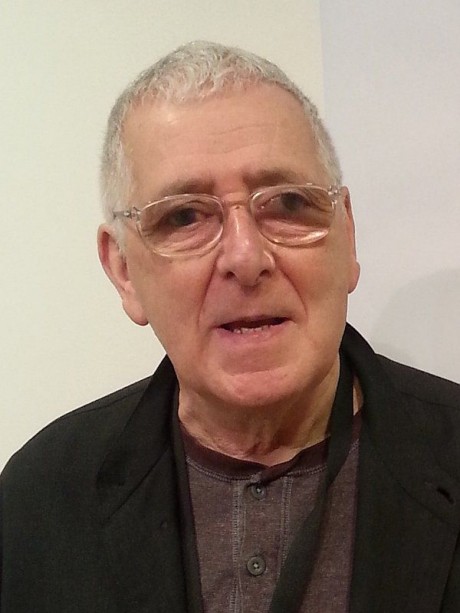


Phie Ambo: Genopdagelsen

Og regnen styrtede ned, og vandstrømmene kom, og vindene blæste og kastedes mod det hus; og det faldt, og dets fald var stort.
Nøgternt skrevet er Genopdagelsen en film om hulebyggeri som pædagogisk metode. Den skildrer i tætte optagelser med Phie Ambos og assistenten Maggie Olkuskas opmærksomt blødt registrerende kamera over to årstider en gruppe på 47 børn og tre lærere i færd med ved en avanceret byggelegeplads aktivitetat at sætte sig ind i de grundlæggende erfaringer om verden, tilværelsen, hinanden og sig selv . Men filmens titel gemmer meget meget mere. Fordelt lag på lag, afsnit for afsnit. Næsten umærkeligt.
Theis Schmidt har nemlig af dette materiale klippet et drama over årstidernes skiftende former, farver og begivenheder blandt dyrene og menneskebørnene på denne samme lille location som i dobbelt forstand er en byggeplads og med et erfarent smil klippet det som en byfilm fra gamle dage med dette nødvendige højdepunkt og vendepunkt, hvor en regnbyge om eftermiddagen blev en vigtig begivenhed; i Berlin, i Stockholm, i Firenze. Her i byen med hulelandet i sit hjerte er det et voldsomt ødelæggende uvejr med blæst og regn, en udfordring til børnene, et krav om reparationer, ja, om genopbygninger, om at tænke forfra, tænke sig om.
Phie Ambo og Theis Schmidt fortæller i et andet lag musikalsk sikkert og helt uden, har de klogt besluttet, den alt for oplagte kronologi gennemgår de filmisk det pensum som lærerne har lagt til rette for børnene, videnskabens fortælling om homo sapiens, om Artens Oprindelse og om dens udvikling. Det bliver de store retrospektive historier genopdaget og om at opdage en metode, opfinde en teknik, det bliver til konflikter mellem nomader og dw fastboende, om huler og huse… og jeg ser hvordan en verden ord for ord kommer til syne inde i sproget.
Mens børnene på egne forestillinger og beregninger bygger solidere huse, nogle er endog i gang med et højhus, afbrydes de blidt af lærernes forelæsninger om geometri tilbage til Arkimedes og om ved trekanters uendelighed at nærme sig kuglens form som i arkitekturen fører til konstruktionen af domen, som uendelig holdbar gennem historien dækker vandbeholdere og domkirker, drivhuse og zoologiske haver, de ser lærernes demonstration af trekantens styrke i såvel en hule og et hus som så overraskende i naturens egne konstruktioner af vitale plantedele.
Jeg oplever det og lærer af det med børnenes øjne som Phie Ambo og Maggie Olkuska fotografi holdes i højde med ind imellem fokuserende hvad disse øjne ser af detaljer: et træs hud under barken, et insekts vandring på et blad, et frøhus’ forbavsende opvisning af naturens byggekunst. Phie Ambo har altid haft eminente evner til at placere sig det rigtige sted med sit kamera, så alt ses selvfølgeligt i en bølgende række præcist gribende scener, hvor derfor børnene og jeg med dem ikke mærker at det her er film. Og der var et digt der handlede om naturen. Noget om at have set at den ikke hænger sammen, at der bare er enkeltdele der aldrig samler sig til ét. Jeg ved ikke. Jeg kunne være tilbøjelig til at skrive det modsatte. Det hele er natur. Det hele hænger sammen. Det hele samler sig til sidst.
Phie Ambos film skriver dette modsatte, den handler nemlig ikke kun om børnene, men er også et essay over deres opdragelse, over mennesket i naturen med en linje som reformpædagogikkens erfaring måske fra Jean-Jaques Rousseaus tilbage til naturen over Robert Baden-Powells scouting for boys, John Deweys learning by doing, Alexander Neills’ Summerhillskole, Arvins og Kragh-Müllers Bernadotteskole til Dorthe Junges og Phie Ambos egen grønne friskole. Altså en cinematografisk overvejelse, en billedskøn og rig skildring af et stort feltarbejde uden ærinder uden for location, en filmisk undersøgelse konsekvent inden for det observerende kameras metode. Næsten som en samling digte (af Fernando Pessoa) der hedder Forever Someone Else. Jeg har læst lidt i den, jeg bryder mig ikke om den. Ren tanke og næsten ingen krop, men Phie Ambo lader sig altså ikke fange af den rene tanke, om end hun ofte er tæt på, hendes film er alle med en levende krop af billeder, dialoger, lyde og musik som næsten selvfølgelig omslutter tankens klarhed.
Og hendes film er i øvrigt alle undersøgelser. Af familieligheden. Af robotter og kunstig intelligens. Af det spirituelles betydning. Af det nødvendige liv med naturen. Af erkendelsens udstrækning og begrænsning. Og så nu af den nødvendige opdragelse som må være summen af de forrige undersøgelsers resultater, en samlet indsigt som hos barnet må internaliseres i en genopdagelse af historien, af håndværket, nomadelivet, bofastheden, hulens og med den hjemmets betydning i en kronologisk opbrudt fortælling om et kronisk forløb gennem den evige genkomst af tid. Sommer, efterår… Senere kommer der måske vildmarksture i frost og sne og forår og de første forelskelser tror jeg. Som konsekvenser, nok ikke nødvendige at filme for de fremskrives i mit sind af det konkret foreliggende værk lagt til Phie Ambos samlede filmskriftrække, hendes helt egen imponerende og tankevækkende antropologi.
En antropologi næsten som den videnskabelige bygget op af en undersøgende, iagttagende, indsamlende del (det observerende kamera og researchen før det) og en fortolkende, konkluderende del (klipningen, musikken, fortællerstemmen). Det hele kan rummes i en poesiens og eksperimentets verden, i virkelighedens prosa og i en med et skuldertræk opgivet og tilgroet byggeplads midt i storbyens brutale bolig- og trafikkonstruktioner lige omkring børnenes og lærernes og Phie Ambos anderledes holdbare og brugbare Thoreauske Walden. Og regnen styrtede ned, og vandstrømmene kom, og vindene blæste og kastedes mod det hus, men det faldt ikke; thi dets grundvold var lagt på klippen.
Danmark 2019, 76 min. Verdenspremiere på CPH:DOX i Bremen Teater 25. marts 17:30, i Grand Teatret 27. marts 16:30 og i Aveny-T 30. marts 14:30
CITATER
Mattæus, Josefine Klougart og John Grierson
SYNOPSIS
47 children are given free rein on an abandoned construction site in Copenhagen, where nature has long since taken over. Here, they will go to school for ten weeks and discover what nature has to teach them. The film is told through scenes with the children, but also with nature’s voice as a continuous narrator: “For what does it mean to learn something? How do you know what you’ve learned from feeling my wind in your hair or my rain on your cheeks? How can you measure what you sensed in your belly as you sat in the top of my tallest chestnut tree? Where does it settle in you?” (Det Danske Filminstitut)
*
Hvad sker der, hvis du slipper en gruppe børn løs på en tom byggeplads i København, og giver dem muligheden for at opbygge et helt nyt samfund fra bunden? Vil de skabe et demokrati eller måske noget helt andet?
Denne dokumentar af Phie Ambo er opbygget som en historie, men også som en udfordring og et eksperiment med børn. Vi er med i processen, når børn i alderen 9-14 år – hver på deres måde – finder og skaber deres plads i et hjemmelavet samfund. Konceptet går på, at de har 10 uger til at skabe, det som de mener er det ideelle samfund. Udover eksperimentet håber filmen på at skabe et unikt indblik i Den grønne Friskole, deres undervisningsstrategi, og hvordan børnene så trives i denne alternative skole.
Klimaforandringerne er uundgåelige. Så hvordan forbereder vi den næste generation, hvordan lærer vi dem at skabe en grøn og harmonisk sfære på jorden? Hvordan får vi børnene til at lave en forandring med deres egen fremtid i tankerne? (Hansen og Petersen Film & Fjernesyn)
CREDITS
Instruktør: Phie Ambo, fotografer: Phie Ambo & Maggie Olkuska, klipper: Theis Schmidt, lyd: Rasmus Winther, producer: Malene Flindt Pedersen. Produceret af Hansen & Pedersen Film og Fjernsyn i samarbejde med Viola Lucia-Film og med støtte fra DFI.
LINKS
https://www.dfi.dk/viden-om-film/filmdatabasen/film/genopdagelsen







